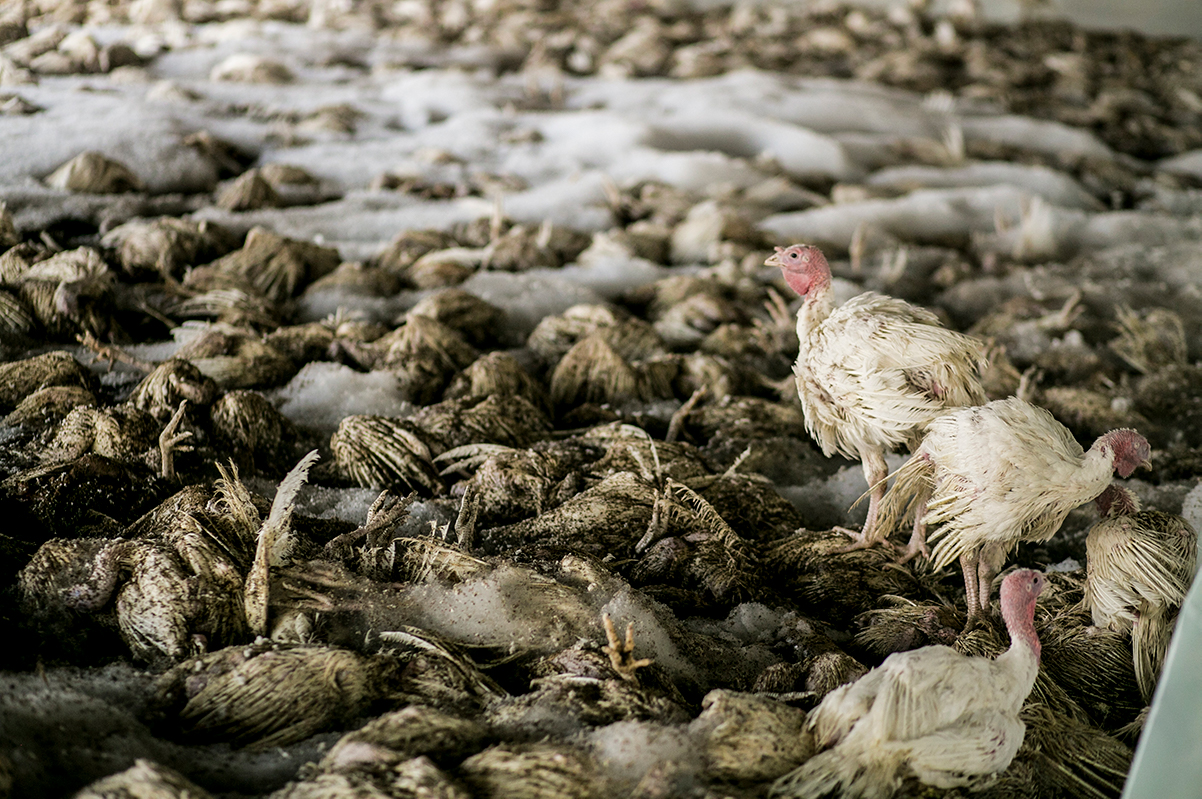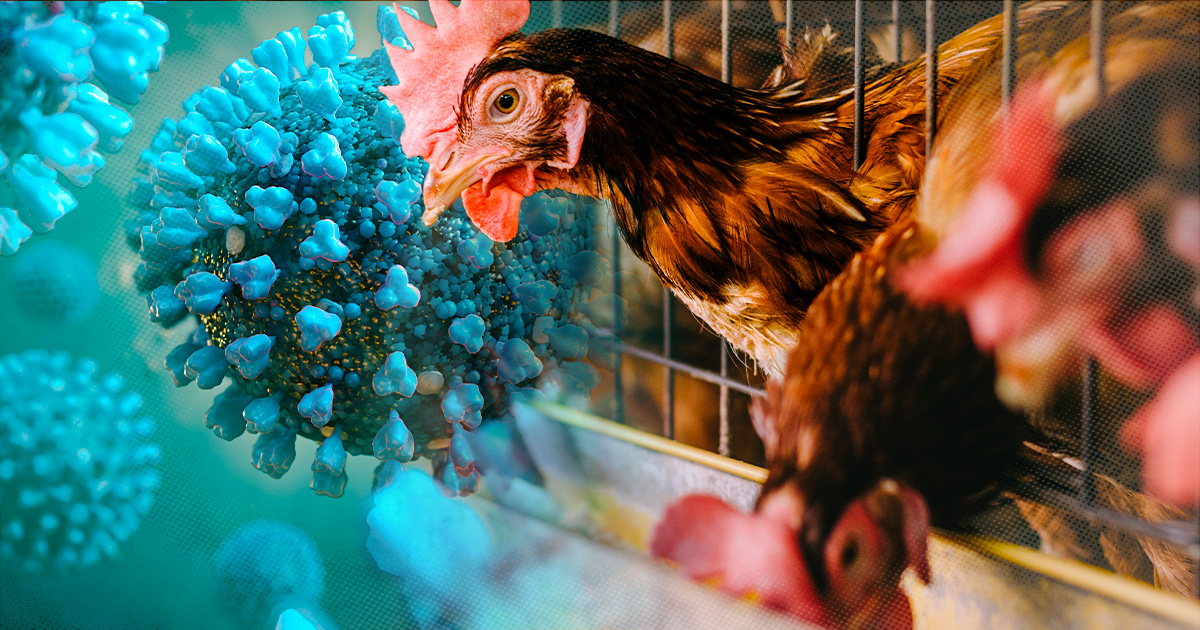Avian Influenza Transmission and Prevention

Influenza viruses can be transmitted to birds through contact with infected birds or their bodily fluids. This can occur through direct contact, such as when birds share the same space or equipment, or through indirect contact, such as when birds come into contact with contaminated surfaces or objects.
The virus can also be spread through the air in the form of respiratory droplets when infected birds cough or sneeze. These droplets can travel short distances and be inhaled by other birds, leading to infection.
To prevent the spread of avian influenza, it is important to implement biosecurity measures in poultry farming. These measures include:
– Isolating infected birds from healthy birds
– Disinfecting equipment and surfaces that have been in contact with infected birds
– Restricting the movement of people and vehicles in and out of poultry farms
– Vaccinating birds against avian influenza
– Implementing surveillance programs to detect and monitor outbreaks of avian influenza
By following these measures, poultry farmers can help to prevent the spread of avian influenza and protect their flocks from infection.
Biosecurity Protocols in Poultry Farming
Biosecurity protocols are a set of measures designed to prevent the introduction and spread of diseases in poultry flocks. These protocols include:
– Restricting access to poultry farms to authorized personnel only
– Requiring visitors to wear protective clothing and footwear
– Disinfecting vehicles and equipment before entering poultry farms
– Isolating new birds from existing flocks for a period of time before introducing them to the main flock
– Monitoring birds for signs of disease and isolating any sick birds immediately
– Disposing of dead birds properly
By following these biosecurity protocols, poultry farmers can help to protect their flocks from avian influenza and other diseases.
Impact of Avian Influenza on Poultry Industry

Avian influenza, commonly known as bird flu, is a highly contagious viral infection that affects birds, particularly poultry. Outbreaks of avian influenza can have a significant impact on the poultry industry, leading to economic losses and challenges for farmers.
Economic Impact
Outbreaks of avian influenza can result in the culling of infected poultry flocks to prevent the spread of the virus. This can lead to a reduction in poultry production, which can result in higher prices for consumers and losses for farmers. Additionally, trade restrictions and quarantine measures imposed to control the spread of the virus can disrupt supply chains and further impact the industry’s profitability.
Challenges for Farmers
Farmers face several challenges in controlling avian influenza outbreaks. The virus can be transmitted through direct contact with infected birds or their bodily fluids, as well as through contaminated equipment or clothing. Implementing strict biosecurity measures, such as isolation of infected flocks and disinfection of facilities, is crucial to prevent the spread of the virus. However, these measures can be costly and time-consuming, posing challenges for farmers, especially small-scale producers.
Role of Government Regulations
Government regulations play a vital role in mitigating the impact of avian influenza outbreaks. By establishing guidelines for disease surveillance, reporting, and control measures, governments can help prevent the spread of the virus and minimize its impact on the poultry industry. Additionally, compensation programs and financial assistance can help farmers recover from losses incurred due to culling and other control measures.
Public Health Implications of Avian Influenza
Avian influenza is a serious viral disease that can infect birds and, in some cases, humans. The virus can cause a range of symptoms in humans, from mild respiratory illness to severe pneumonia and even death.
There are several potential risks of avian influenza to human health. One of the most significant risks is that the virus can mutate and become more easily transmissible to humans. If this happens, it could lead to a global pandemic of avian influenza, which could have devastating consequences.
Another risk of avian influenza is that it can cause severe illness and death in humans. The virus can cause a range of symptoms in humans, including fever, cough, sore throat, muscle aches, and fatigue. In some cases, the virus can lead to more severe complications, such as pneumonia, respiratory failure, and death.
Surveillance and Monitoring Systems, Avian influenza
There are a number of surveillance and monitoring systems in place to detect and prevent human infections with avian influenza. These systems include:
– Passive surveillance: This involves healthcare providers reporting cases of avian influenza to public health authorities.
– Active surveillance: This involves public health authorities actively seeking out cases of avian influenza in the community.
– Laboratory testing: This involves testing samples from people who are suspected of having avian influenza to confirm the diagnosis.
These surveillance and monitoring systems help to identify cases of avian influenza early on so that steps can be taken to prevent the virus from spreading to other people.
Measures to Protect Public Health
There are a number of measures that can be taken to protect public health during outbreaks of avian influenza. These measures include:
– Isolation: People who are infected with avian influenza should be isolated from other people to prevent the virus from spreading.
– Antiviral medications: Antiviral medications can be used to treat avian influenza and reduce the severity of symptoms.
– Vaccination: Vaccines are available to protect people from avian influenza. These vaccines are typically recommended for people who are at high risk of exposure to the virus, such as healthcare workers and poultry workers.
These measures help to protect public health during outbreaks of avian influenza by preventing the virus from spreading and reducing the severity of symptoms in those who are infected.
Avian influenza, a nasty virus that affects birds, has been making headlines lately. If you want to stay updated on the latest news and developments, check out the LA Times for in-depth coverage. Their reporters are on the ground, providing the latest updates on the spread of the virus and its impact on poultry farms and wildlife.
Bro, avian influenza lagi bikin geger nih. Penyakit yang menyerang unggas ini bikin heboh karena bisa nular ke manusia. Tapi tenang aja, asal kita masak daging unggasnya dengan benar, aman kok. Nah, ngomong-ngomong soal daging, pernah dengar Dave Portnoy ?
Dia itu pendiri Barstool Sports, yang terkenal suka makan. Ya udah, balik lagi ke avian influenza, yuk jaga kesehatan unggas kita biar nggak kena penyakit ini.